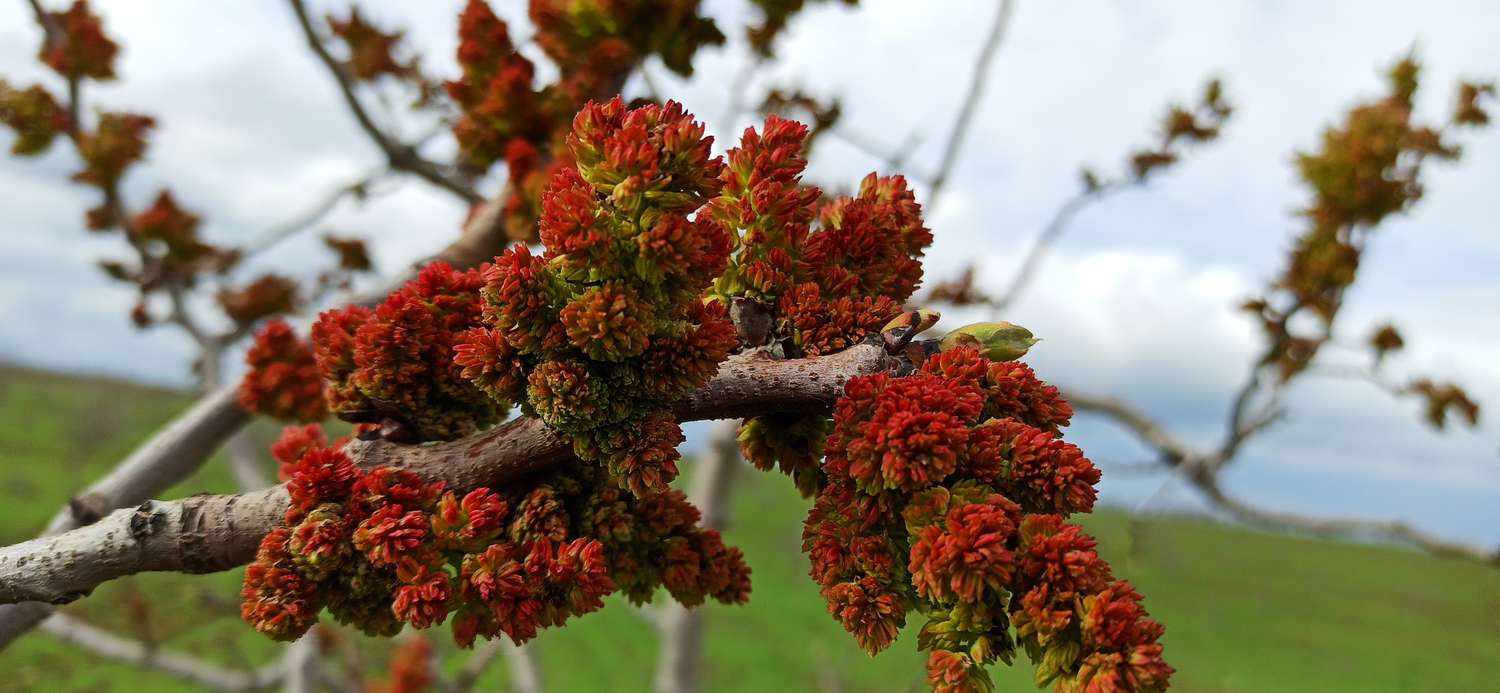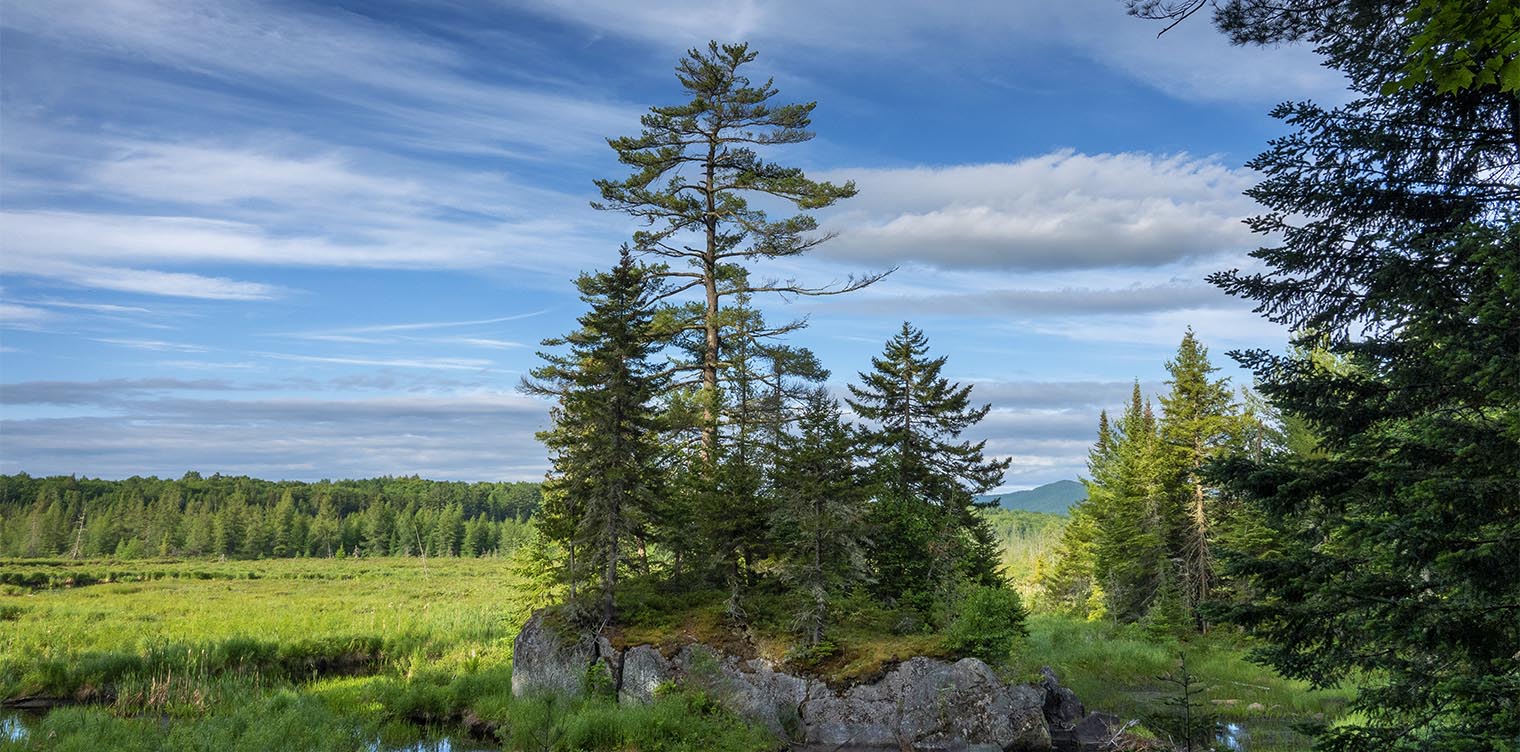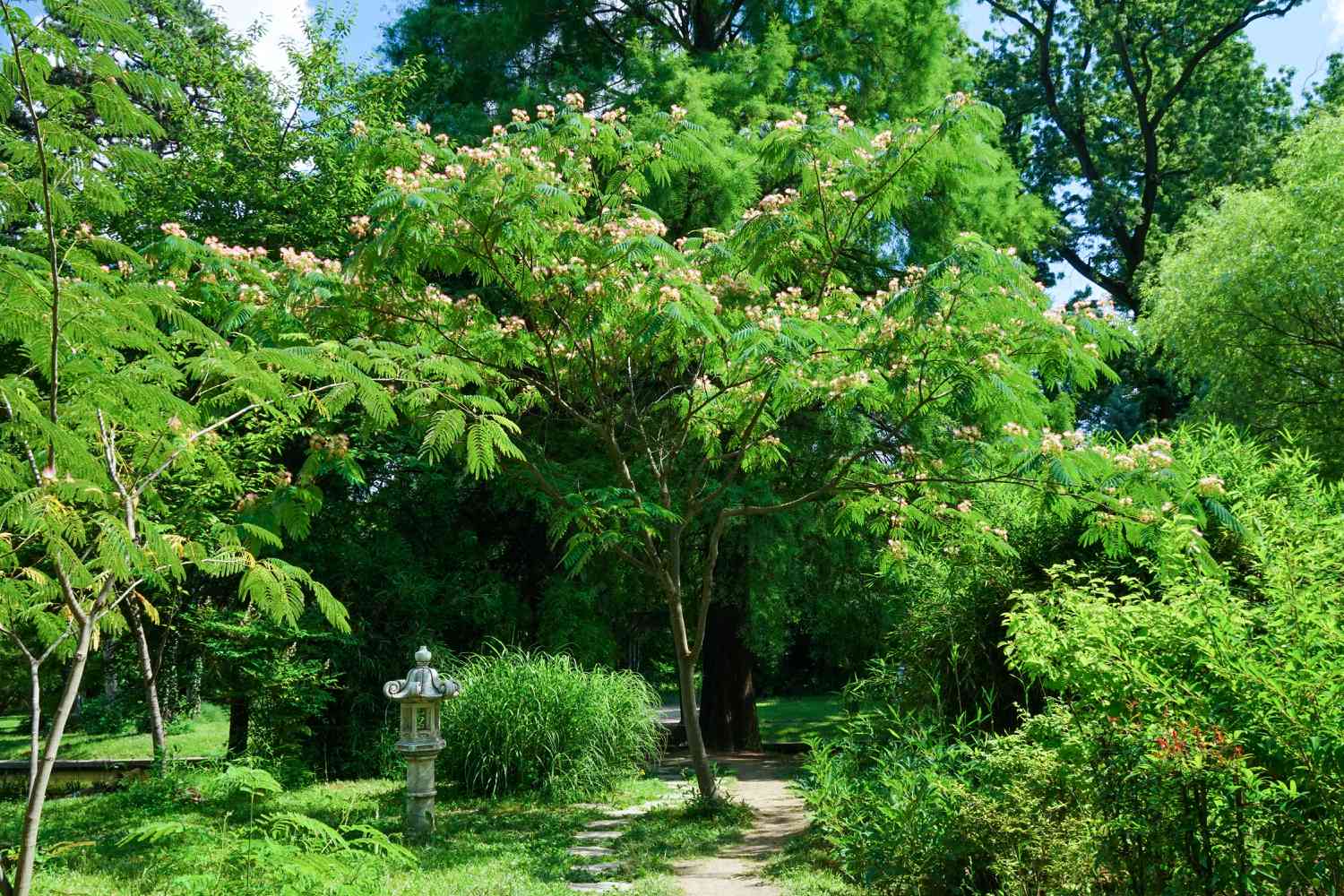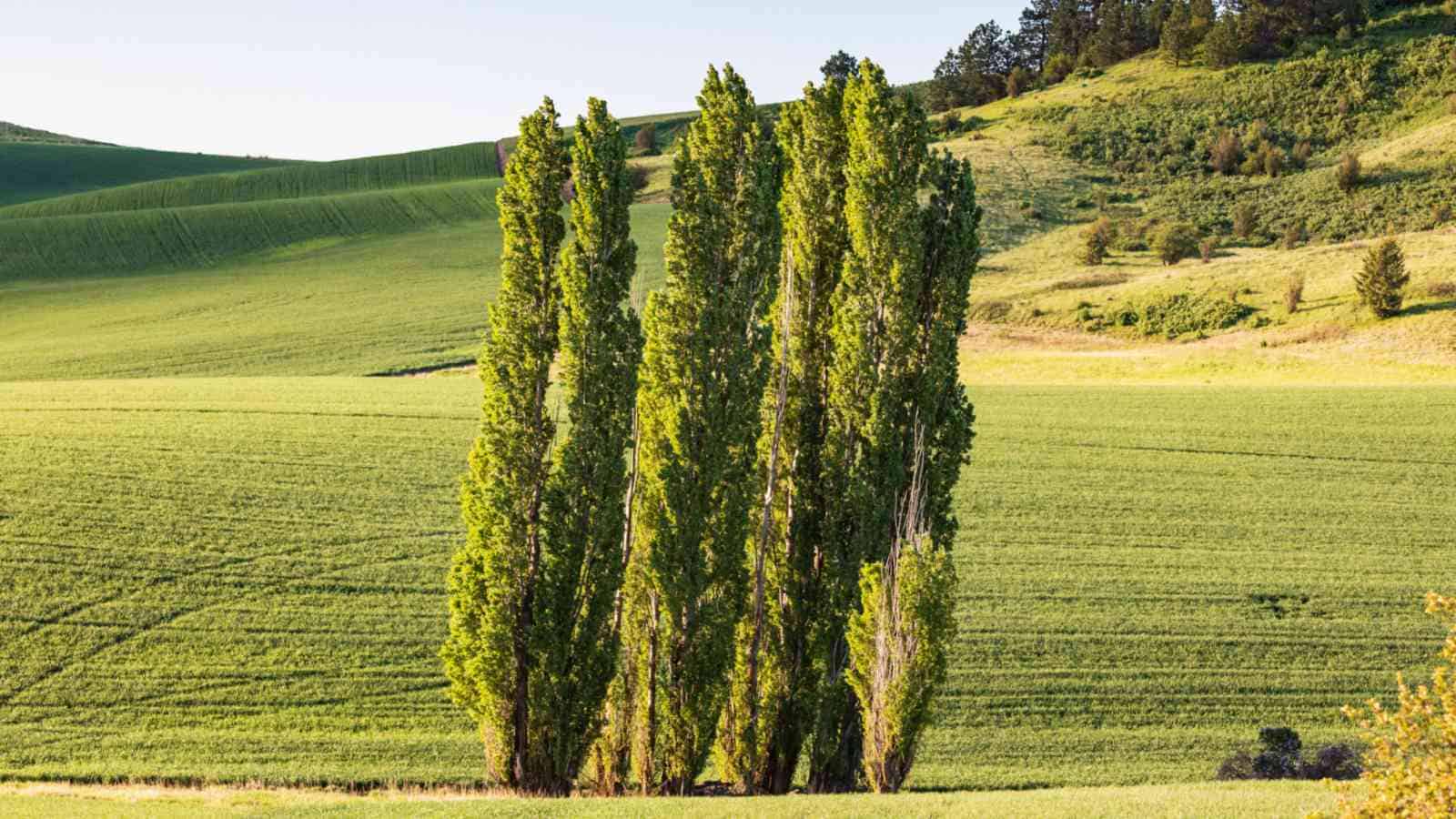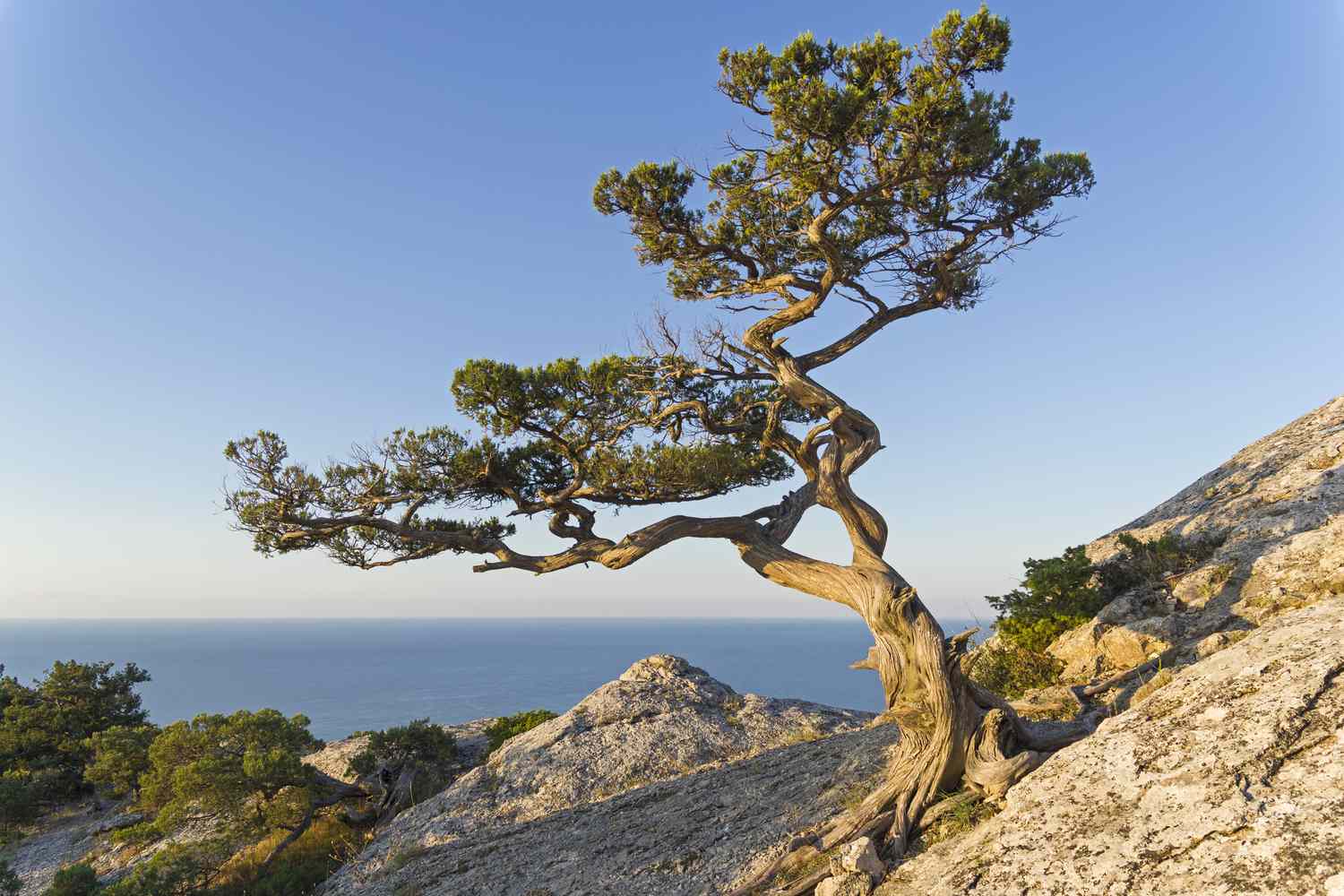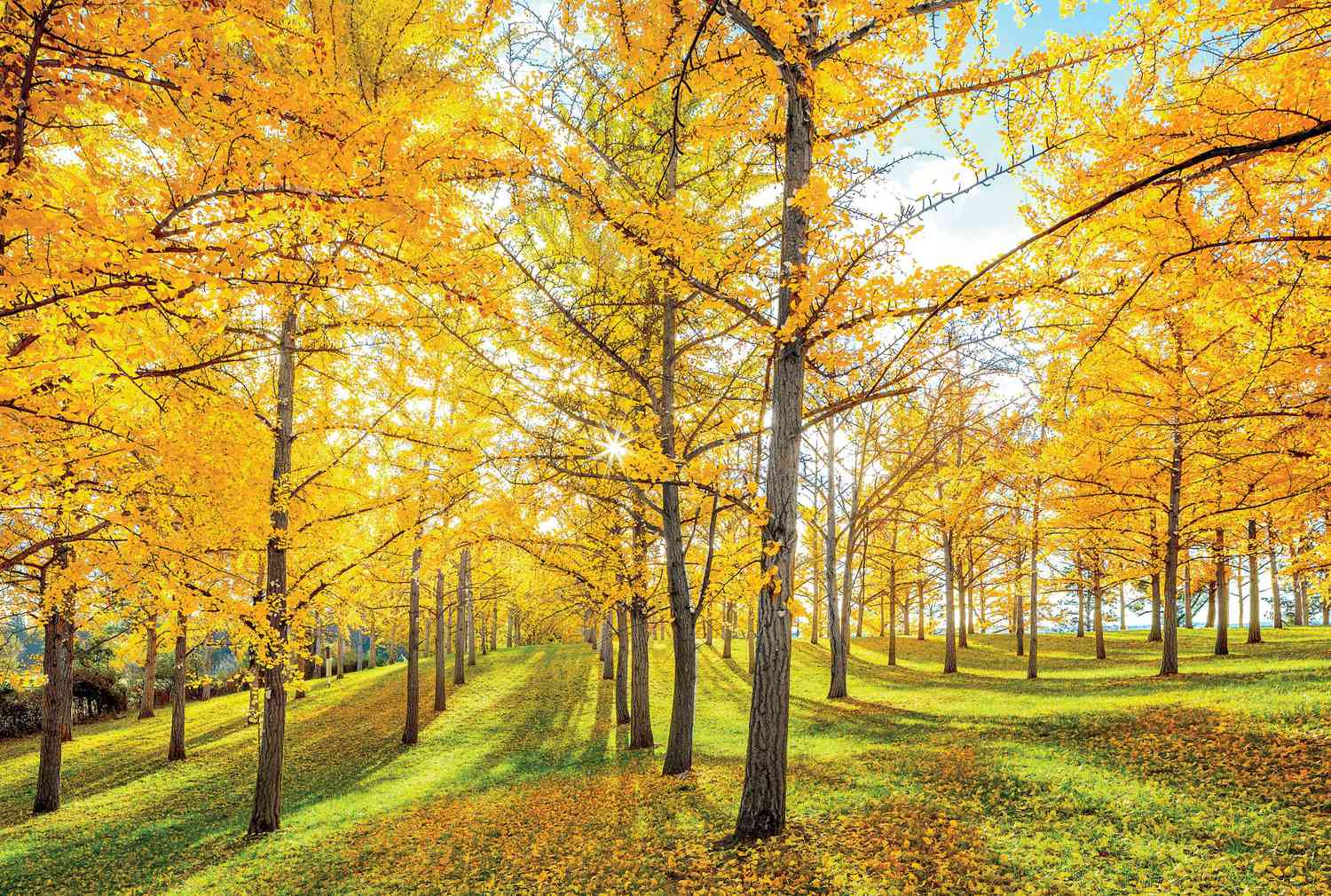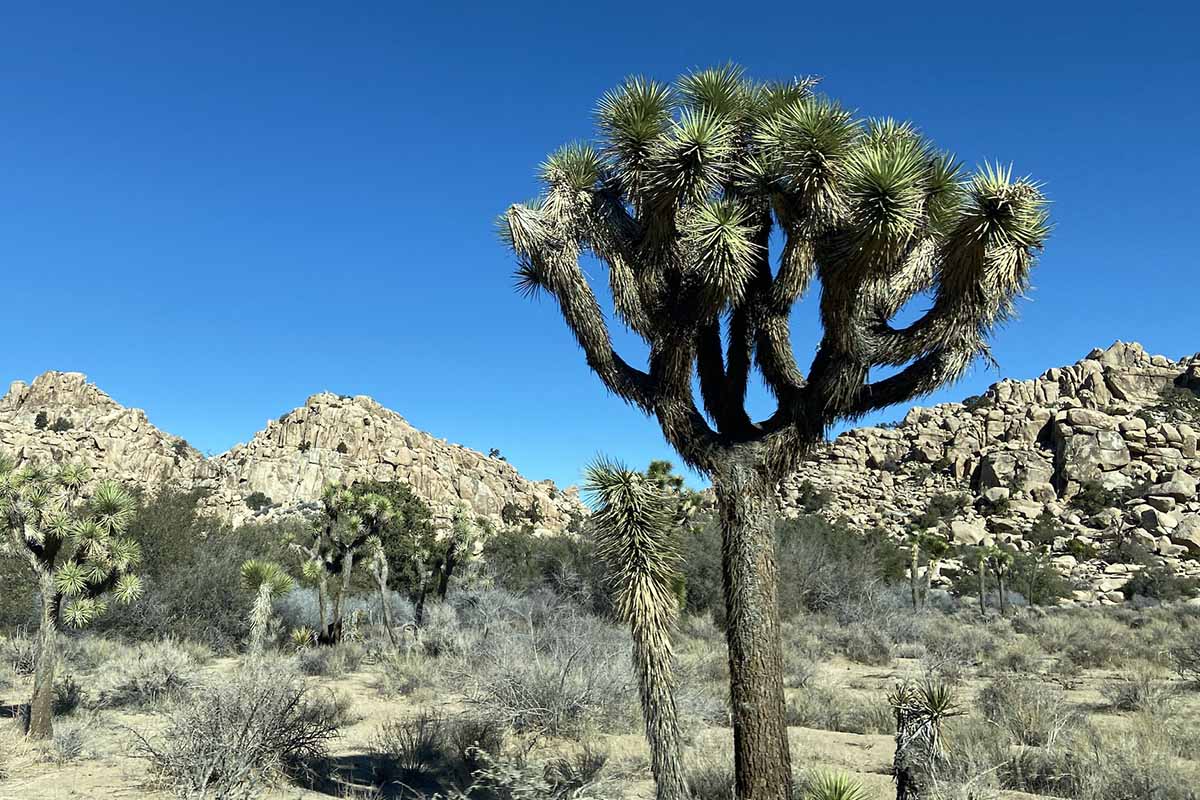Home>Types of Gardening>Edible Gardening>Where Do Pawpaw Trees Grow
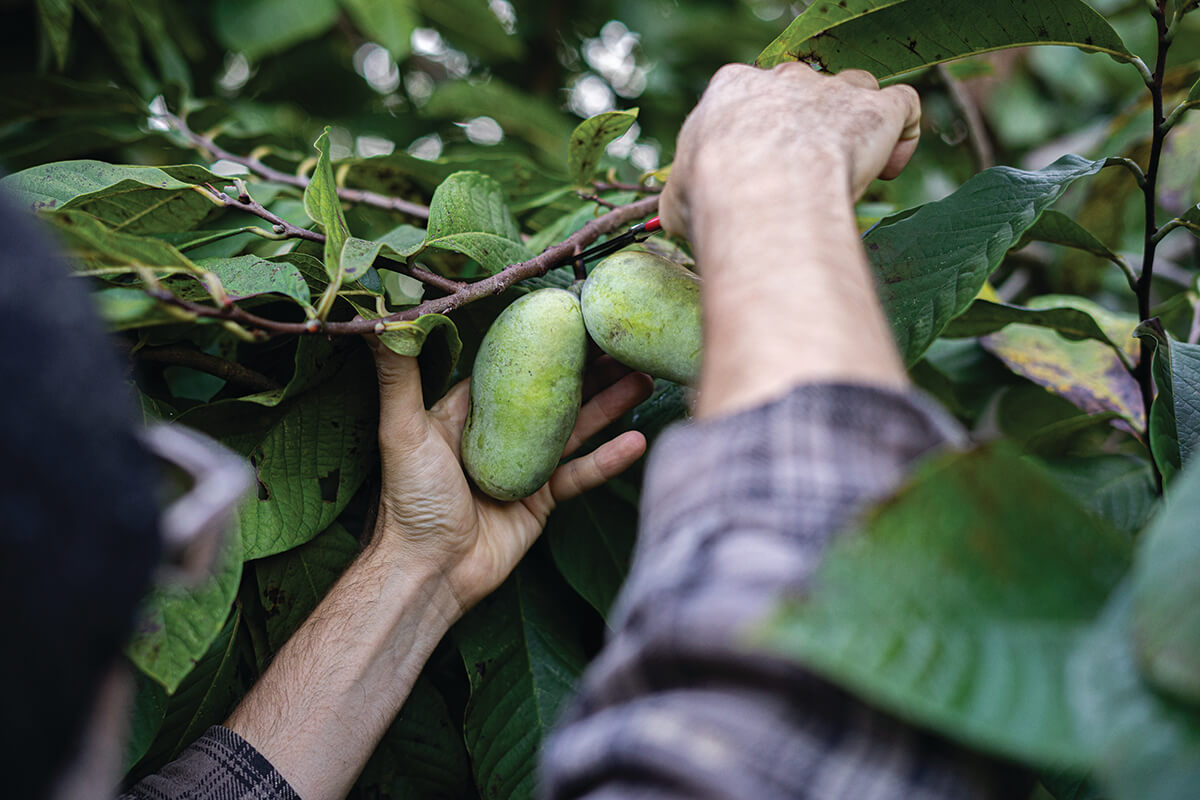

Edible Gardening
Where Do Pawpaw Trees Grow
Published: November 9, 2023
Discover the ideal growing conditions for pawpaw trees and learn how to incorporate them into your edible gardening journey.
(Many of the links in this article redirect to a specific reviewed product. Your purchase of these products through affiliate links helps to generate commission for Chicagolandgardening.com, at no extra cost. Learn more)
Table of Contents
Introduction
Welcome to the world of pawpaw trees! If you are a gardening enthusiast or a fan of fresh, homegrown fruits, then you have come to the right place. Pawpaw trees offer not only a delightful addition to your edible garden but also a unique and tropical flavor that sets them apart from other fruit trees.
Pawpaw trees, scientifically known as Asimina triloba, are native to North America and have been enjoyed by indigenous communities for centuries. With their luscious green leaves and beautiful flowers, these trees not only provide visual appeal but also produce delectable fruits that resemble a mix between a mango and a banana.
In this article, we will explore the native range, climate requirements, growing regions, natural habitat, cultivation techniques, and potential problems and pests associated with pawpaw trees. By the end of this journey, you will have a solid understanding of how to grow and care for pawpaw trees, whether you are a beginner or a seasoned gardener.
So, if you are ready to embark on this edible gardening adventure and discover the wonders of pawpaw trees, let’s delve deeper into the fascinating world of these unique fruit-bearing trees.
Native Range of Pawpaw Trees
The pawpaw tree is native to the eastern United States, with its natural range stretching from the Atlantic coast to the Mississippi River and from southern Ontario, Canada, to northern Florida. It is primarily found in the states of Ohio, Indiana, Kentucky, and Missouri. Historically, it was also present in more northeastern states such as New York and New Jersey.
These trees have adapted to thrive in the rich soils of river valleys, floodplains, and shady understory environments. Their ability to tolerate both partial shade and full sun makes them versatile and well-suited for various growing conditions.
Due to its native range, the pawpaw tree has played a significant role in American history and culture. Native American tribes, such as the Cherokee and the Powhatan, used the fruit as a food source and valued its medicinal properties. Early European settlers also recognized the value of the pawpaw, with Thomas Jefferson himself cultivating the tree and enjoying its fruit at Monticello.
Despite its rich history and cultural significance, the pawpaw tree has remained relatively unknown to the wider public. However, in recent years, there has been a renewed interest in this native fruit tree, leading to increased cultivation and appreciation of its unique flavor and nutritional benefits.
In the next sections, we will explore the ideal climate requirements and specific growing regions where pawpaw trees thrive. So, let’s dive deeper into the fascinating world of pawpaw cultivation!
Climate Requirements for Pawpaw Trees
Pawpaw trees have specific climate requirements to thrive and produce abundant fruit. Understanding these requirements is crucial to successfully grow them in your garden or orchard.
First and foremost, pawpaw trees are native to temperate regions of the eastern United States. They prefer a humid climate with a moderate amount of rainfall throughout the year. Ideally, they should receive between 30 and 60 inches (76 to 152 cm) of precipitation annually. However, they can tolerate drier conditions as long as they receive adequate moisture through irrigation.
In terms of temperature, pawpaw trees are generally hardy in USDA hardiness zones 5 to 9. They thrive in regions with a cool winter dormancy period, where temperatures regularly drop to -10 to -20°F (-23 to -29°C). This dormancy period is essential for proper flower and fruit development. However, they may also tolerate slightly colder or warmer conditions depending on the specific variety.
Pawpaw trees also require a certain number of chilling hours during the winter. Chilling hours are the cumulative number of hours between 32°F (0°C) and 45°F (7°C) that the tree experiences during its dormant period. This chilling period helps break dormancy and ensures the tree’s overall health and productivity during the growing season. The required chilling hours for pawpaw trees range from 400 to 800 hours, depending on the cultivar.
Another important factor to consider is sun exposure. While pawpaw trees can tolerate partial shade, they require a minimum of 4 to 6 hours of direct sunlight per day to thrive and produce quality fruit. Planting them in a location that receives morning sun and afternoon shade is ideal, as it provides the right balance of light and heat.
It’s worth noting that excessive heat and prolonged exposure to temperatures above 95°F (35°C) can negatively impact the growth and fruiting of pawpaw trees. Therefore, it’s important to choose cultivars that are well-suited to your specific climate conditions.
Understanding the climate requirements of pawpaw trees is essential for selecting the right location to plant them and ensuring their successful growth. In the next section, we will explore the specific growing regions where these trees thrive. So, let’s continue our journey into the wonderful world of pawpaw cultivation!
Growing Regions for Pawpaw Trees
Pawpaw trees can be grown in various regions across the United States, as long as the climate requirements are met. While they are primarily native to the eastern states, their adaptability has allowed them to thrive in different areas.
One of the primary growing regions for pawpaw trees is the Midwest, particularly in states such as Ohio, Indiana, and Kentucky. These regions offer the ideal climate conditions, including cold winters, moderate rainfall, and fertile soils. The Ohio River Valley, in particular, has been nicknamed the “Pawpaw Belt” due to its historical association with pawpaw cultivation.
Pawpaw trees can also be successfully grown in the Mid-Atlantic region, including parts of Pennsylvania, Maryland, Virginia, and West Virginia. The climate in these areas, with its temperate summers and cool winters, provides an optimal environment for the trees to thrive.
The Southeastern United States, including states like Georgia, North Carolina, and Tennessee, also offers suitable conditions for pawpaw cultivation. These regions have a longer growing season and a mild winter, allowing the trees to flourish and produce abundant fruits.
While the native range and ideal growing regions for pawpaw trees are mainly concentrated in the eastern half of the country, they can also be grown in other areas, as long as the necessary climate requirements are met. Some success has been seen in the Pacific Northwest, California, and parts of the Northeastern United States.
It is important to note that even within these general growing regions, there may be microclimates that can impact the success of pawpaw cultivation. Factors such as elevation, proximity to bodies of water, and local weather patterns can create variations in temperature and precipitation, which may affect the growth and fruit production of pawpaw trees.
If you are unsure whether your region is suitable for growing pawpaw trees, it is recommended to consult with local gardening experts, agricultural extension offices, or nurseries specializing in native fruit trees. They can provide guidance specific to your location and help you choose the right cultivars for your region.
Now that we have explored the growing regions for pawpaw trees, let’s delve deeper into their natural habitat and the conditions they thrive in. Join me in the next section as we uncover more about the native environment of these unique fruit trees!
Natural Habitat of Pawpaw Trees
Pawpaw trees are well-adapted to their natural habitat in the eastern United States, where they thrive in the rich and diverse ecosystems of the region. Understanding their native environment can provide valuable insights into their preferred growing conditions and help us successfully cultivate them.
In their natural habitat, pawpaw trees are typically found in the understory of diverse woodlands and forest edges. They prefer moist and well-drained soils that are rich in organic matter. Sandy loam or loamy soils with a pH range of 5.5 to 7.0 are ideal for their growth and development.
Pawpaw trees are well-suited to partial shade conditions, often growing beneath the canopy of taller trees in forested areas. This shade provides protection from excessive sunlight, which can scorch their delicate leaves and hinder their growth. However, they can also tolerate full sun if provided with adequate moisture and nutrients.
Their association with shade and moist environments is attributed to their natural adaptation to floodplains and river valleys. Pawpaw trees have evolved to withstand seasonal flooding, which benefits their growth by replenishing the soil with nutrients and maintaining moisture levels.
Additionally, their natural habitat provides them with a lush understory environment, which allows them to thrive in the presence of other native plants and wildlife. In these ecosystems, pawpaw trees play a vital role in supporting biodiversity by providing food and habitat for insects, birds, and mammals.
While understanding the natural habitat of pawpaw trees is informative, it also highlights the versatility of these trees. Despite being adapted to specific conditions, they can be successfully cultivated in a range of garden settings and climates, as previously discussed in the “Growing Regions” section.
Now that we have explored the natural habitat of pawpaw trees and their preferred growing conditions, it’s time to delve into the cultivation techniques that will enable you to grow these remarkable fruit trees in your own garden or orchard. Join me in the next section as we uncover the secrets to successful pawpaw cultivation!
Cultivation of Pawpaw Trees
Successfully cultivating pawpaw trees requires careful attention to planting, soil preparation, watering, and maintenance. By following these essential cultivation techniques, you can ensure the healthy growth and productivity of your pawpaw trees.
1. Planting: Choose a suitable location that provides a well-drained soil with good organic content. Dig a hole that is wider and deeper than the root ball of the young tree. Place the tree in the hole, making sure the root collar is level with or slightly above the soil surface. Backfill the hole with soil, gently firming it around the roots.
2. Soil Preparation: Ensure the soil is rich in organic matter by incorporating compost or well-rotted manure. This improves drainage, fertility, and moisture retention. Pawpaw trees prefer slightly acidic soil with a pH range of 5.5 to 7.0.
3. Watering: Adequate watering is crucial during the establishment phase of the tree. Keep the soil consistently moist but not waterlogged. Once established, pawpaw trees have moderate water requirements and should be watered during dry periods.
4. Mulching: Apply a layer of organic mulch around the base of the tree to conserve moisture, suppress weeds, and regulate soil temperature. Start the mulch a few inches away from the trunk to prevent rot. Renew the mulch annually.
5. Pruning: Pruning is generally minimal for pawpaw trees. Remove any suckers or unwanted growth near the base of the tree. Prune dead or damaged branches and thin overcrowded branches to improve air circulation and light penetration.
6. Pollination: Pawpaw trees are not self-pollinating and require cross-pollination between different varieties for fruit production. Plant at least two different cultivars within close proximity to ensure successful pollination.
7. Fertilization: Regular fertilization with a balanced organic fertilizer helps promote healthy growth and fruit production. Follow the manufacturer’s instructions for application rates and timing.
8. Pests and Diseases: Pawpaw trees are relatively pest and disease resistant, but they may face challenges such as aphids, spider mites, or fungal diseases. Monitor the trees regularly and take appropriate action if necessary, such as using organic insecticides or fungicides.
By following these cultivation techniques and providing proper care and maintenance to your pawpaw trees, you can enjoy a bountiful harvest of delicious fruits. Now that you have learned the essentials of cultivating pawpaw trees, let’s explore the commercial production of these unique fruit trees in the next section.
Commercial Production of Pawpaw Trees
While pawpaw trees are not as widely cultivated as other fruit trees, there is a growing interest in their commercial production. With their unique flavor, increasing demand for locally grown and unique fruits, and potential health benefits, pawpaws offer opportunities for orchardists and farmers.
Cultivar Selection: Commercial pawpaw orchards typically prioritize cultivars that are known for their superior taste, size, yield, and disease resistance. Popular cultivars include ‘Sunflower’, ‘Shenandoah’, ‘Susquehanna’, and ‘Overleese’.
Propagation: Pawpaw trees can be propagated through seeds or grafting. Seed propagation is common for establishing new orchards, while grafting allows for the replication of specific cultivars and ensures consistent quality.
Orchard Establishment: Pawpaw trees require proper site selection, soil preparation, and spacing for commercial production. Orchards should be located in regions with suitable climate conditions and have well-drained, fertile soil. Regular soil testing and amendments based on the results are crucial for optimal growth and productivity.
Harvesting and Handling: Pawpaw fruits ripen within a short period, typically in late summer to early fall. A careful balance between picking the fruits at peak maturity for optimal flavor, but before they become overripe, is crucial. Large-scale commercial operations often use harvesting equipment such as fruit pickers or specialized nets. Proper handling and packaging are essential to prevent bruising and maintain fruit quality.
Marketing and Sales: Due to their niche market and limited shelf life, successful marketing of pawpaw fruits involves targeting local markets, farmers’ markets, specialty grocery stores, and restaurants that emphasize locally sourced and unique fruits. Educating consumers about the flavor and nutritional benefits of pawpaws can help generate interest and demand.
Processing: Pawpaw fruits can be used in a variety of value-added products such as ice creams, smoothies, baked goods, jams, and jellies. Developing and marketing these processed products can provide additional revenue streams for commercial pawpaw growers.
While the commercial production of pawpaw trees is still relatively niche, it presents an opportunity for farmers and orchardists to diversify their offerings and cater to the growing demand for unique, locally grown fruits. With careful planning, cultivation, and marketing strategies, commercial pawpaw production can be a profitable venture.
As we come to the end of our exploration of the commercial production of pawpaw trees, let’s reflect on the potential problems and pests that growers may encounter in the next section.
Potential Problems and Pests for Pawpaw Trees
While pawpaw trees are generally resilient and low-maintenance, they are not immune to potential problems and pests. Understanding and being proactive in managing these issues is essential for maintaining the health and productivity of your pawpaw trees.
1. Deer and Rodent Damage: Pawpaw trees are sometimes vulnerable to browsing and damage from deer and rodents. Fencing or other deterrent methods can help protect young trees from these pests.
2. Insect Pests: Pawpaw trees can be targeted by a few insect pests, such as the pawpaw zebra swallowtail butterfly caterpillar and the pawpaw tree borer. Regular monitoring of the trees and the application of organic insecticides when necessary can help manage these pests.
3. Fungal Diseases: Pawpaw trees can be susceptible to several fungal diseases, including powdery mildew, leaf spot, and black spot. Proper site selection, adequate air circulation, and regular fungicide applications can help prevent or manage these diseases.
4. Poor Pollination: Inadequate pollination can result in low fruit set or misshapen fruits. To ensure successful pollination, it is important to plant at least two different cultivars in close proximity to facilitate cross-pollination.
5. Nutrient Deficiencies: Pawpaw trees may develop nutrient deficiencies, such as nitrogen, phosphorus, or potassium deficiencies. Regular soil testing and appropriate fertilization can help prevent or address these deficiencies.
6. Improper Watering: Overwatering or underwatering can lead to stress and adversely affect the growth and development of pawpaw trees. Maintaining proper soil moisture levels and avoiding waterlogged conditions is crucial.
7. Environmental Factors: Extreme weather conditions, such as late spring frost or drought, can impact the flowering and fruiting of pawpaw trees. Proper site selection and providing appropriate care during challenging weather events can help mitigate their effects.
8. Genetic Variability: Pawpaw trees are known for their genetic variability, resulting in variations in fruit size, quality, and flavor. This can be both a challenge and an opportunity for growers, as it requires careful selection of cultivars and understanding customer preferences.
By being aware of these potential problems and pests, you can take proactive measures to protect your pawpaw trees and maintain their health and productivity. Regular monitoring, proper maintenance, and implementing appropriate control measures when necessary will help ensure the success of your pawpaw cultivation efforts.
Now that we have explored potential problems and pests for pawpaw trees, let’s recap the key points and conclude our journey into the wonderful world of pawpaw cultivation.
Conclusion
Congratulations! You have now journeyed through the fascinating world of pawpaw trees, from their native range and climate requirements to cultivation techniques, commercial production, and potential problems. Pawpaw trees offer a unique and delicious addition to any edible garden, with their tropical flavor reminiscent of a mix between a mango and a banana.
With their adaptability to various growing regions and their resistance to most pests and diseases, pawpaw trees can be successfully cultivated by both beginners and experienced gardeners. Understanding their preferences for moist, well-drained soil, partial shade, and suitable pollination conditions will ensure their healthy growth and abundant fruit production.
For those interested in venturing into commercial production, selecting the right cultivars, implementing proper orchard management techniques, and finding niche markets are key to success. Value-added products and marketing strategies can further enhance the commercial viability of pawpaw cultivation.
While potential problems and pests may arise, such as deer damage, insect pests, fungal diseases, and nutrient deficiencies, proactive monitoring and appropriate control measures will help maintain the health and productivity of pawpaw trees.
Whether you choose to grow pawpaw trees for personal enjoyment or as part of a commercial endeavor, these unique fruit trees offer a rewarding experience and a delicious harvest. So, why not add pawpaw trees to your gardening plans and enjoy the tropical flavors they bring to your edible garden?
Now that you have a solid understanding of pawpaw cultivation, it’s time to roll up your sleeves, get your hands dirty, and embark on your own pawpaw-growing adventure. Happy cultivating!


